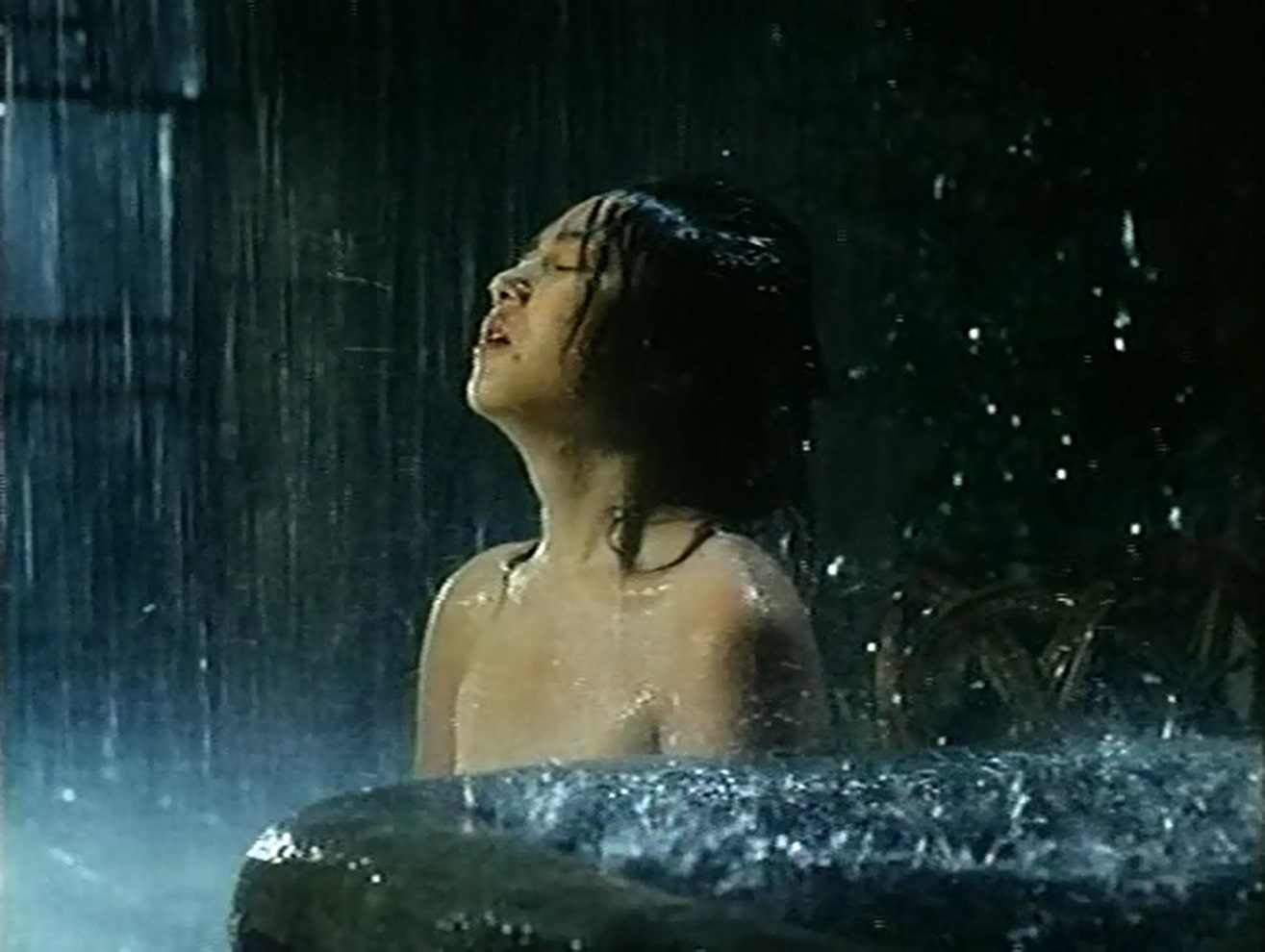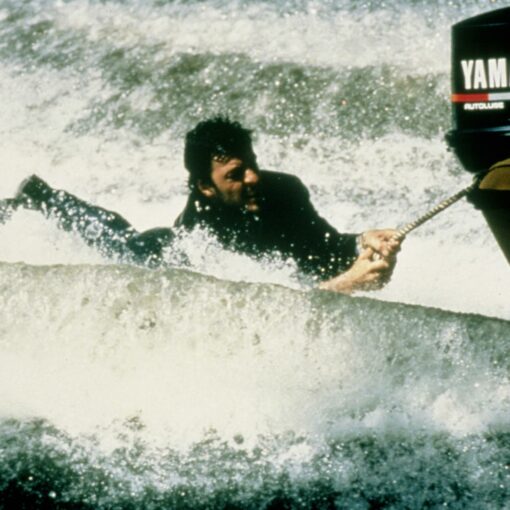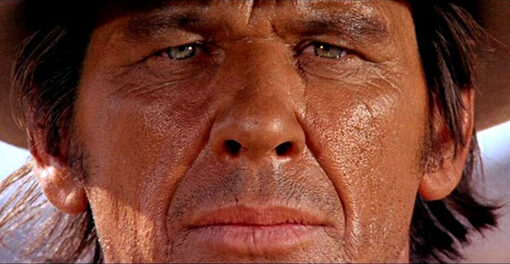“Albeit obsolete, the movie works very well owing to its unflinching sincerity and offbeat structure”
A young, attractive journalist Keiko Mitani (Komaki Kurihara) scrutinises the hardships of young Japanese women who were to comfort Japanese workers and soldiers as prostitutes in the first half of twentieth century. She sets off for Amakusa from where lots of women were taken away abroad in order to be transformed into courtesans. While conversing with her friend in a pub, Keiko accidently gets acquainted with a Osaki Yamakawa (Kinuyo Tanaka – old Osaki, Yôko Takahashi – young Osaki), an old female who used to work in a Malaysian whorehouse called Sandakan No.8. Keiko resolves to dwell at her place for a while with a view to interviewing her. Notwithstanding, getting to know the woman’s story is not as simple as it seems…

Despite being virtually unknown nowadays, Sandakan No.8 based on the book by Tomoko Yamazaki was very prosperous at the time of its release and engendered a discussion over the issue of so-called karayuki-san (the prostitutes used as playthings by Japanese soliders) who after the wartime atrocities were forced to carry on living in miserable conditions. It likewise prompted a reaction of the Japanese government which afterwards made up its mind to provide the still-alive females with some compensations. Apart from that, the film was nominated for one Oscar in Best Foreign Language Film category and was chosen by Gene Siskel as the third best motion picture of 1976 (1).

The flick embarks on being immensely lugubrious already from the very onset, once the journalist encroaches into the shabby apartment of the aforementioned karayuki-san – Osaki. The ramshackle location seems to embody the dereliction of women in Japanese society and implies the further trajectory of the sombre opus. Osaki is a lone woman without any plans and hopes which already have been dissipated by numerous adversities, the harshness of milieu and repressing collective of her village. Her son deserted her long time ago, being ashamed of his loving mother, an ex-courtesan. The only creatures which accompany her stranded existence are homeless cats which she shelters as though she craved to endow them with some commiseration and consolation which she had never sustained in her life. The director – Kei Kumai – does not waste any time and comes straight to the point of this savoury tale of human despair. Sandakan No.8 is a feminising picture possessing some affinity with New Wave works of the sixties such as The Insect Woman (1963) or Masumura’s exceedingly substantial Red Angel (1966). Even though the New Wave ventures might bear some stylistic ramifications in comparison to Sandakan No.8, Kumai’s effort proves to dilate upon a theme distinctive for Japanese New Wave e.g. social pressure. The protagonist played by Kinuyo Tanaka is genuinely humane and the instant she is embroiled into the ruthless world of prostitution, one can sense the duress and humiliating sway of her filthy labour. By this manoeuvre, there emerges the fulmination against authoritarianism, Japanese society, politics, convenances and negligent demeanour towards women.

The material never tumbles into the slough of demagogy or sentimentality and it stays what it is supposed to be. Albeit obsolete, the movie works very well owing to its unflinching sincerity and offbeat structure which prevents the flick from becoming ennui-infected. Notwithstanding, the very composition which exerts an auxiliary impact on this piece of filmmaking entails some foibles, no matter how insignificant they might seem. To my way of thinking, Osaki Yamakawa is the sole palpable character in Sandakan No. 8. Distinctly, the motion picture succeeds in being historically informative and emotionally fecund, but it is at a loss for three-dimensional figures and fails to ground its engaging topic. We hardly get to know anything about other heroes or antagonists since only Osaki Yamakawa is in the central point. For instance, all we learn about Keiko Mitani is that she works as a journalist, gathers disparate pieces of information on karayuki-san, has a husband, a daughter and some friends – nothing memorable. This does not constitute too much, but it sufficed for me to sympathise with her, however superficial she looked. It is conspicuous that a filmmaker cannot throw in an ensemble whatever they desire to, but the aspect left me with a sensation of insufficiency.

The acting is truly slick throughout the entire picture. Kinuyo Tanaka is by far the best as old Osaki. The actress consigns such a great portion of artistry and emotionality that it is extraordinarily pleasing to see her amalgamating contradictory feelings in singular scenes. At one point, the moment she vacillates between recounting the story of her life to the journalist and remaining silent, one can discern on her face an internal combat transpiring within her soul. Kinuyo Tanaka indubitably merited Silver Berlin Bear for her galvanising performance in this drama. Despite having a rather straightforward role, Komaki Kurihara does her job well too, but she rather stays in the background. Yôko Takahashi surprised me with her dexterous performing abilities inasmuch she proved to be quite plausible, besides being very beautiful. There is another good actor – Ken Tanaka who stars as Osaki’s lover in her youth.

The soundtrack by Akira Ifukube is not something exceptional or particularly memorable with its classical tones, but it is actually fit for this bleak film and duly dramatizes the occurrences taking part on the screen. The cinematography by Mitsuji Kanau is outstanding as well as refreshing and you might notice how aptly the director took care of the framing which rarely erupts with garish tints. Mr Kumai prefers dousing sequences in dark colours and enhancing the murky atmosphere which I found something uncannily beauteous.

In spite of what I criticise the movie for, the picture ranks among more important Japanese opuses of the seventies and hitherto shimmers with this excruciatingly poignant subject matter. Not only does the work provide us with some interesting facts, but also with the agonisingly sulky tale which refrains from being somewhat preachy or schmaltzy.
6/10 – good
(1) http://siskelandebert.org/







One thought on “Sandakan No.8 (1974) | OBSCURE PICKS”
A fantastic review Michal! I hope you’ll cover some of your French New Wave favorites in the future. Cheers!